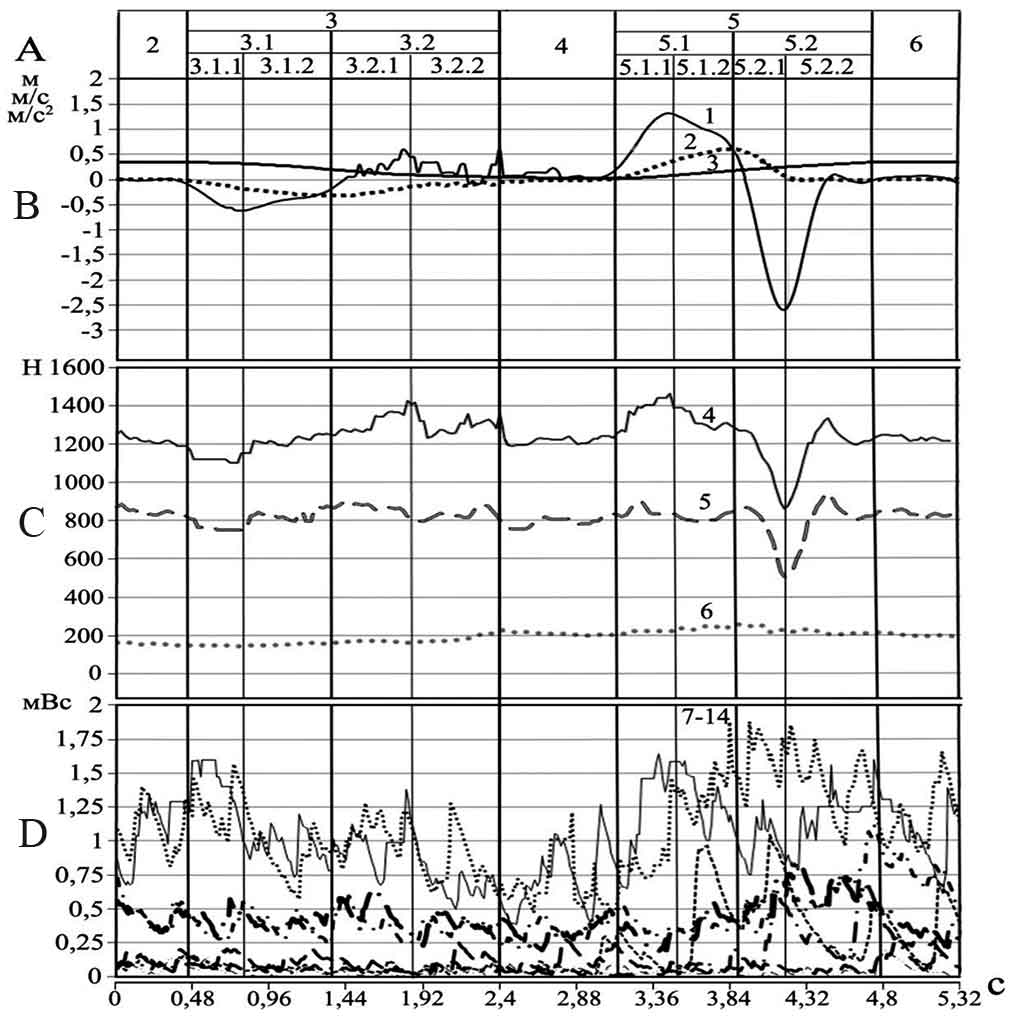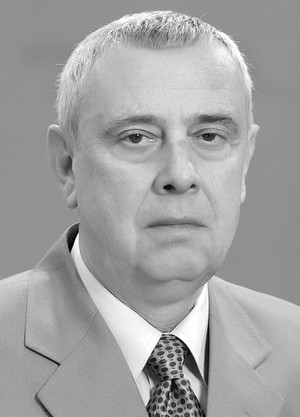Complex analysis of bench press exercise performance techniques of athletes diagnosed with musculoskeletal disorders
Фотографии:
ˑ:
Professor, Dr.Biol. A.B. Trembach
Postgraduate I.N. Fedorova
Honoured trainer of the Russian Federation Yu.V. Shkabarnya
Doctoral Student, PhD D.A. Levchenko
PhD I.G. Pavel'ev
Kuban State university of Physical Culture, Sport and Tourism, Krasnodar
Keywords: powerlifting, sport technique, musculoskeletal disorder, bench press competitive exercise, external and internal structure of exercise, time- and-position-specific intervals of exercise.
Introduction
As far as individual sport accomplishments are concerned, powerlifting is unlikely much different from many other sport disciplines that require technically challenging perfectly coordinated motor skills being developed by athletes, in the sense that individual success in such sports largely depends on the quality of the athlete’s performance technique. In adaptive sports, however [1], some elements of individual techniques of leading athletes may significantly vary depending on the particular health disorders they have [2]. Nevertheless, the relevant technique assessment criteria appear to be underdeveloped in sport science as for now. Most of the sport analysts still tend to consider individual sport techniques aside from a wide range of kinematic, dynamic and electromyographic indicators of high importance for a competitive exercise performance technique [3, 4]. Such an approach gives no chance to adequately assess the internal and external structure of the movement and detect functionally important time-and-position-specific elements in its performance sequence. This study was initiated to bridge this gap.
Objective of the study was to give substantiations for a newly developed complex analysis method in application to the bench press competitive exercise performance techniques of the athletes having different musculoskeletal disorders, with the relevant kinematic, dynamic and electromyographic data and indicators being applied to assess the functionally meaningful time-and-position-specific elements in the performance sequence.
Materials and methods
16 athletes of 18-25 years of age diagnosed with different musculoskeletal disorders were subject to the bench press competitive exercise performance technique tests and analysis under the study, with the analytical data being obtained using a special hardware-and-software test unit developed in cooperation with RITM Experimental Design Bureau engineers (the design being patented by Pilot Model Patent #116058RU and Invention Patent #2489177RU) [4], with a video-analyzer module being added to the unit for the purposes of the study. The integrated test system gave us the means to simultaneously register the performance test data for the subject characteristics calculations using the following 3 test modules.
The video-analyzer module was designed to record the vertical movement elements of the weight movement sequence versus the athlete’s body position, plus the weight speed and acceleration rates; the strain-gauge module was applied to record the vertical strains in the back and pelvis group muscles of the weightlifters; and the aim of the electromyographic module was to record, simultaneously with the biomechanical data readings, envelope electromyograms of the eight (8) symmetric muscles engaged in the exercise performance sequence (M. pectoralis major, dexter et sinister; M. triceps brachii, dexter et sinister; M. biceps brachii, dexter et sinister; M. latissimus dorsi dexter et sinister).
Results and discussion
The test data and analysis gave us the means to trace, using a set of reference points, the functionally meaningful stages and the time-and-position-specific phases in the bench press competitive exercise performance sequence (Figure 1 hereunder).
Please note that Stage 1 (starting position of the athlete lying on the bench) and Stage 7 (bar lowering back on the rack) of the performance sequence are not shown on Figure 1 for the reason that they were assumed to be largely irrelevant for the subject exercise technique.
Stage 2: Bar is pressed off the rack and fixed on stretched arms (isometric action mode of the muscles).
Stage 3: Bar is lowered on the chest (yielding action mode of the muscles). We have split up this stage into 2 periods and 4 phases as follows. Period 1: accelerated lowering of the bar by downward movement, including the following two phases: phase 1 from the bar lowering move starting point to the minimum press and acceleration point; and phase 2 from the minimum press and acceleration point to the minimum bar speed point. Period 2: slowing down the bar, including the following two phases: phase 1 from the minimum bar speed point to the maximum strain and bar acceleration point; and phase 2 from the maximum strain and bar acceleration point to the point of the kinematic and dynamic process indices coming to minimum, with the bar lowered to and rested on the chest.

Figure 1. Kinematic, dynamic and electromyographic index variations in the bench press competitive exercise performance process
Note:
А: stages (2-6), periods (3.1; 3.2; 5.1; 5.2) and phases (3.1.1–3.1.2; 3.2.1– 3.2.2; 5.1.1–5.1.2; 5.2.1–5.2.2), see explanations in the text;
B: kinematic indices, including (1) vertical bar movement; (2) bar speed; and (3) bar acceleration rate;
C: dynamic indices (ballistograms), including vertical strains in the pelvis segment (6), shoulder girdle (5) and summarized strain in the both segments (4);
D: electromyographic indices as provided by the envelope electromyograms of the subject symmetric muscles (M. pectoralis major, M. triceps brachii, M. biceps brachii, M. latissimus dorsi (7–14) from top to bottom.
Stage 4: Bar resting on the chest (isometric action mode of the muscles). This stage was sorted out by the minimum values of the kinematic, dynamic and electromyographic indices.
State 5: Overcoming action mode of the muscles. We have split up this stage into 2 periods and 4 phases as follows. Period 1: accelerated upward press of the bar, including phase 1 from the starting point of the bar movement to the maximum strain and bar acceleration point; and phase 2 from the maximum strain and bar acceleration point to the maximum bar speed point. Period 2 of the bar slowing-down movement, including the following two phases: phase 1 from the maximum bar speed point to the minimum press-and-acceleration point; and phase 2 from the minimum press-and-acceleration point to the maximum vertical bar movement versus the body (bar fixing on the stretched arms).
Stage 6: Bar fixing on the stretched arms (isometric action mode of the muscles) with every kinematic, dynamic and electromyographic index coming to the minimum.
Conclusions
Electrical activity indices of the subject muscles being recorded simultaneously with the biomechanical data readings in the bench press competitive exercise performance tests and analyses were found indicative of the roles of the muscles in different periods and phases of the movement sequence as classified by the study. Analysis of the biomechanical and electromyographic test data and indices makes it possible to sort out the most informative elements (stages, periods and phases) of the bench press competitive exercise performance technique in powerlifting sport and make their qualitative assessments. Such qualitative data obtainable by the coach may provide a basis for the training process improvement, whilst referees may benefit from such performance elements rating data being used in competitions to assess the quality of the exercise performance techniques.
References
- Trembach A.B., Shkabarnya Yu.V., Fedorova I.N., Lipatnikova M.A., Ponomareva T.V., Tyulenev A.N., Pisarenko O.A. Comparative analysis of powerlifting sport technique in athletes of different skill levels with musculoskeletal disorders // Inzhenerny vestnik Dona - 2012. - № 4 (Part 1). - P. 178-180.
- Shejko B.I. Bench press motor structure of patients with musculoskeletal disorders // Adaptive physical culture, sport and health: Integrating Science and Practice: Proc. of the III All-Russia research-practical conference, Part II.- Ufa: RPC BashIPhC, 2009. - P. 247-253
- Hales M.E., Johnson B.F., Johnson J.T. Kinematic analysis of the powerlifting style squat and the conventional deadlift during competition: is there a cross-over effect between lifts? // J Strength Cond Res. – 2009. - № 23(9). – Р. 74-80.
- Król H., Golas A., Sobota G. Complex analysis of movement in evaluation of flat bench press performance. // Acta Bioeng Biomech. – 2010. - № 12(2). – Р. 80-93.
Abstract
Sports result of powerlifters diagnosed with musculoskeletal disorders largely depends on the quality of the athlete’s performance technique. However, the whole range of kinematic, dynamic and lectromyographic indicators of this competitive exercise is not taken into account.
Objective of the study was to design and give substantiations for a newly developed complex analysis method in application to the bench press competitive exercise performance techniques of the athletes having different musculoskeletal disorders, with the relevant kinematic, dynamic and electromyographic data and indicators being applied to assess the functionally meaningful time-and-position-specific elements in the performance sequence.
16 athletes of 18-25 years of age were subject to the bench press competitive exercise performance technique tests and analysis under the study, with the analytical data being obtained using a special hardware-and-software test unit, with a video-analyzer module being added to the unit for the purposes of the study.
The video-analyzer module was designed to record the vertical movement elements of the weight movement sequence versus the athlete’s body position, plus the weight speed and acceleration rates; the strain-gauge module was applied to record the vertical strains in the back and pelvis group muscles of the weightlifters; and the aim of the electromyographic module was to record, simultaneously with the biomechanical data readings, envelope electromyograms of the eight symmetric muscles engaged in the exercise performance sequence.
Using the proposed approach five key spatio-temporal intervals (phases) of the bench press competitive exercise were detected being: bar pressed off the rack and fixed on stretched arms, bar lowered on the chest, bar resting on the chest, press. The stages of bar lowered on the chest and press were split up into periods and phases. The resulting information obtainable by the coach may provide a basis for the training process improvement, whilst referees may benefit from such performance elements rating data being used in competitions to assess the quality of the exercise performance techniques.




 Журнал "THEORY AND PRACTICE
Журнал "THEORY AND PRACTICE